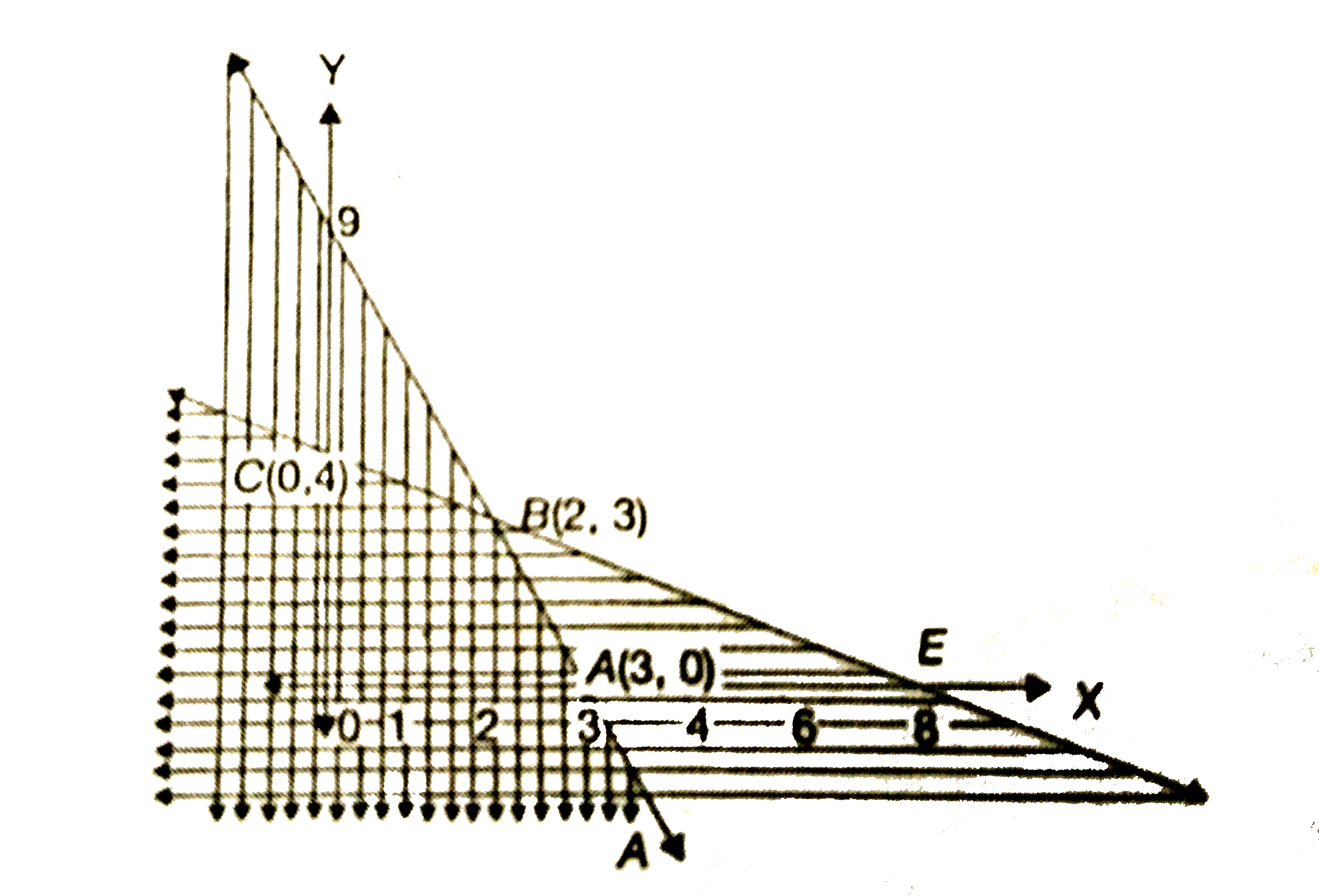InterviewSolution
Saved Bookmarks
| 1. |
A manufacturer makes two models A and B of a product. Each model is processed by two machines. To complete one unit of model. A, machines I and II must work1 hours and 3 hours respectively. To complete one unit of model B, machine I and II must work 2 hours and 1 hour respectively. Machine I may not operate for more than 8 hours per day, and machine II for not more than 9 hours per day. If profits on model A and B per unit are Rs. 300 and Rs. 350, then how many units of each model should be produced , per day, to maximize the profits ? |
|
Answer» Solution :Let the MANUFACTURER produce x unit of model A and y of model B `implies x ge 0,y ge 0`. ltbr/gt `:.` Profit FUNCTION `d=300x+350 y`. To make x and y UNITS of model A and B, machine I should be used only 8 hours per day. `:. X+ 2y le 8` and machine II should be used for at the most 9 hours per day . `3x +y le 9 and x ge 0, y ge 0` Hence, we maximize f=300x+350y, subject to the constraints. `x+ 2y le 8` `3x+y le 9` `x ge 0, y ge 0` As `x ge 0 and y gt 0`, the FEASIBLE region lies in the first quadrant. The graph of `x+2y le 8` is shown with horizontal lines and the graph of `3x +y le 9` is shown with vertical lines. `:.` The feasible region is the part of the first quadrant in which there are both horizontal and verical line. The shaded region is the closed polygon having vertices O90,0) ,A (3,0), B(2,3) and C(0,4). Profit function f=300x+350 y At vertex O(0,0),f=300(0)+350(0)=0 At vertex A(3,0), f=300(3)+350(0)=900 At vertex B(2,3),f=300(2)+350(3)=600+1050=1650 At vertex C(0,4) , f=300(0)+350(4)=1400 `:.` f is maximum at the vertex B(2,3). Hence, in order to get the maximum profit, the manufacturer has to produce 2 units of model A and 3 units of model B per day . 
|
|